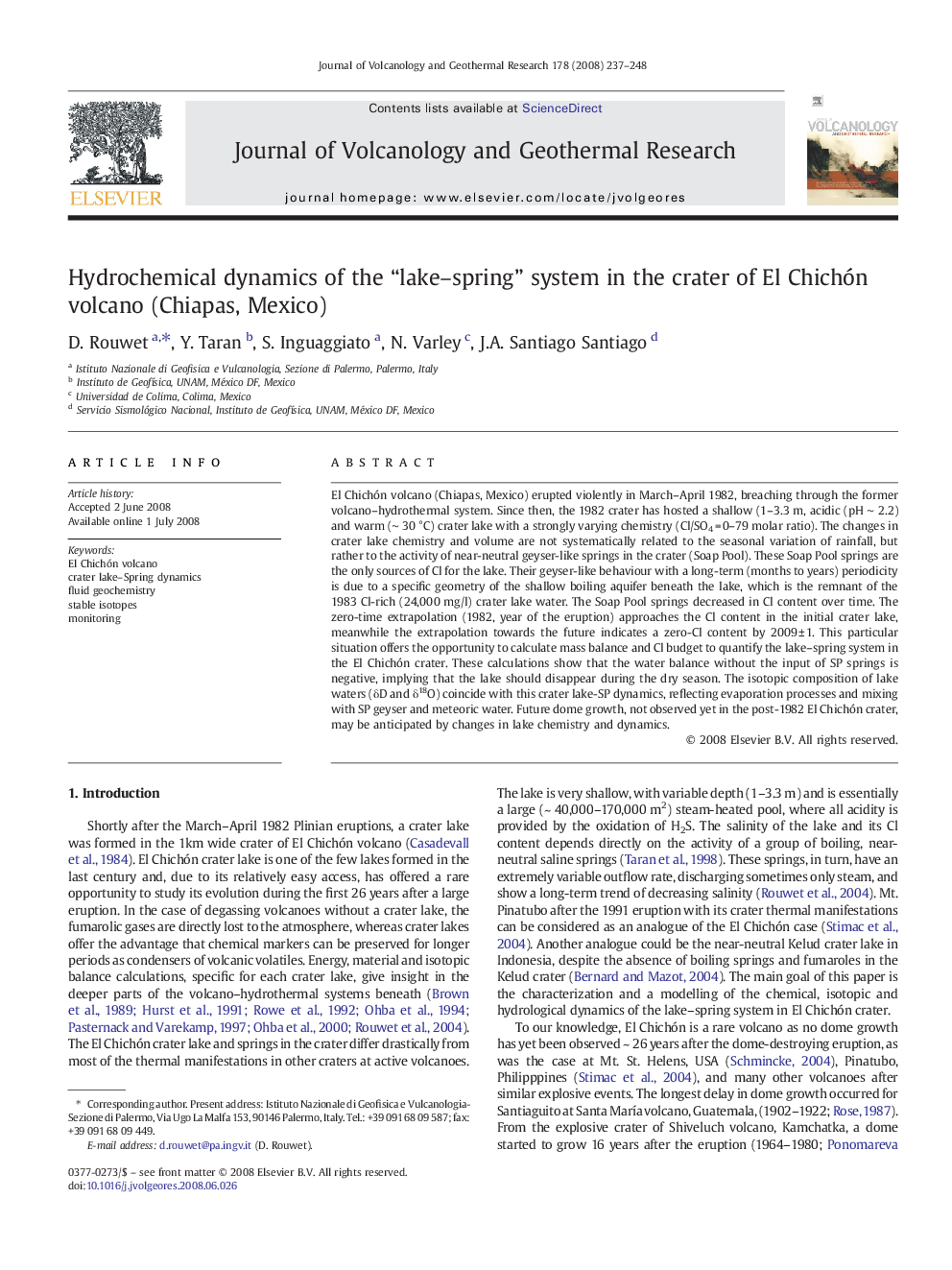| Article ID | Journal | Published Year | Pages | File Type |
|---|---|---|---|---|
| 4714426 | Journal of Volcanology and Geothermal Research | 2008 | 12 Pages |
El Chichón volcano (Chiapas, Mexico) erupted violently in March–April 1982, breaching through the former volcano–hydrothermal system. Since then, the 1982 crater has hosted a shallow (1–3.3 m, acidic (pH ∼ 2.2) and warm (∼ 30 °C) crater lake with a strongly varying chemistry (Cl/SO4 = 0–79 molar ratio). The changes in crater lake chemistry and volume are not systematically related to the seasonal variation of rainfall, but rather to the activity of near-neutral geyser-like springs in the crater (Soap Pool). These Soap Pool springs are the only sources of Cl for the lake. Their geyser-like behaviour with a long-term (months to years) periodicity is due to a specific geometry of the shallow boiling aquifer beneath the lake, which is the remnant of the 1983 Cl-rich (24,000 mg/l) crater lake water. The Soap Pool springs decreased in Cl content over time. The zero-time extrapolation (1982, year of the eruption) approaches the Cl content in the initial crater lake, meanwhile the extrapolation towards the future indicates a zero-Cl content by 2009 ± 1. This particular situation offers the opportunity to calculate mass balance and Cl budget to quantify the lake–spring system in the El Chichón crater. These calculations show that the water balance without the input of SP springs is negative, implying that the lake should disappear during the dry season. The isotopic composition of lake waters (δD and δ18O) coincide with this crater lake-SP dynamics, reflecting evaporation processes and mixing with SP geyser and meteoric water. Future dome growth, not observed yet in the post-1982 El Chichón crater, may be anticipated by changes in lake chemistry and dynamics.
